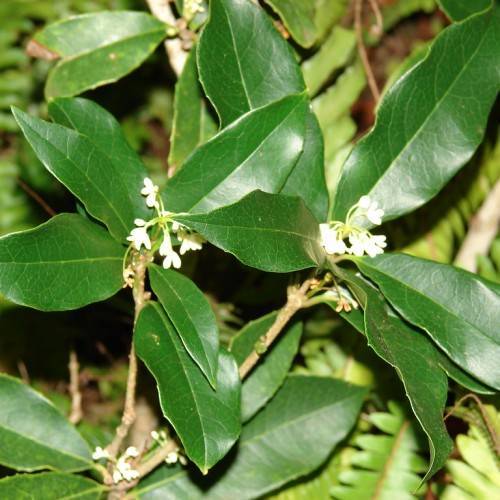
fragrant olive
Osmanthus fragrans
Cycle:
Perennial
Watering:
Average
Hardiness Zone:
9 - 11
Flowers:
Flowers In Spring
Sun:
full sun,part shade
Fruits:
Fruits Ready In Fall
Edible:
Yes
Leaf:
Yes
Growth Rate:
Low
Maintenance:
Moderate
Drought Tolerant:
Yes
Salt Tolerant:
Yes
Thorny:
Yes
Indoors:
Yes
watering
Fragrant olives need to be watered every 7-10 days, and should receive about an inch of water during each watering. Soak the soil until water begins to run out of the bottom of the pot, then stop watering. During the winter when the plant is dormant, you can reduce the amount of watering. Let the top of the soil dry out before re-watering. During warmer months you may need to water every 5-7 days. Be mindful not to let the soil dry out completely, as it can damage the plant.
sunlight
Fragrant olive (Osmanthus fragrans) needs between 4 and 6 hours of direct sunlight each day, spread out evenly throughout the day. The sun should be at its highest in the late morning. When possible, provide more sunlight in summer, but be careful not to overdo it, especially in hotter climates. Too much sunlight can be damaging to the plant and can cause leaves to become yellow and scorched.
pruning
Fragrant olive requires minimal pruning and should be pruned only when necessary. If pruning is necessary, it should take place in early spring or late winter when the plant is not actively growing. This will help reduce stress on the plant and ensure best results. Pruning should also be done carefully, removing only branches and shoots that are dead, diseased, damaged, weak, or overlapped. Avoid over-pruning as this can weaken the plant.
